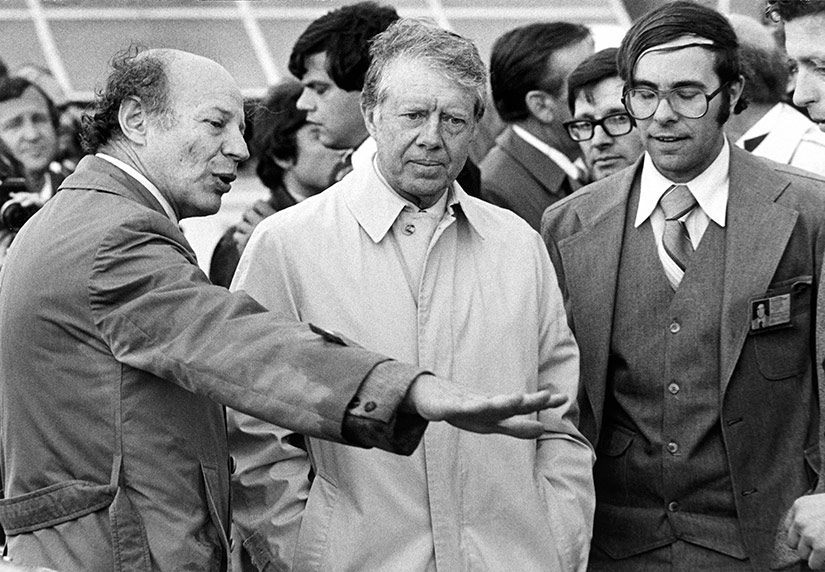President Carter’s Vision Helped Launch SERI and NREL

The staff of what is now the National Renewable Energy Laboratory (NREL) owes a considerable debt to former President Jimmy Carter, who died Dec. 29, 2024.
“President Carter was a visionary and a man of science who realized the potential of solar power and renewable energy. The Solar Energy Research Institute began under his watch, and his visit to SERI on a rainy Sun Day helped validate the importance of our research,” NREL Director Martin Keller said. “His legacy lives on in our mission.”
NREL was originally known as the Solar Energy Research Institute (SERI), founded in 1977 by the Carter administration. That launch came three years after Congress and the Nixon White House had taken steps to reduce U.S. dependence on foreign oil with the passage of the Solar Energy Research Development and Demonstration Act of 1974.
If there is one date that announced SERI’s coming of age, it was probably May 3, 1978. President Jimmy Carter visited the laboratory on what he had proclaimed as “Sun Day”—and Sylvia Motazedi, who was SERI laboratory director Paul Rappaport’s executive assistant at the time, was seated in the front row with her husband for the gathering on South Table Mountain.
As described in the Clean Energy Innovators book, rain pelted and the wind gusted as the president spoke around 4 p.m. Sylvia’s boss had been worriedly phoning for weather updates prior to the presidential arrival—but it came off without a hitch.
Under the clouds, Carter joked that the administration had not made a final decision on where to locate the laboratory—and was considering a site where the sun actually shone. His remarks spotlighted the importance of the young laboratory to the future of U.S. energy policy.
“We must begin the long, slow job of winning back our economic independence. Nobody can embargo sunlight,” Carter said. “No cartel controls the sun. Its energy will not run out. It will not pollute the air; it will not poison our waters. It's free from stench and smog. The sun's power needs only to be collected, stored, and used.”
Sylvia, who was hired June 1, 1977 (technically before SERI opened), recalled it as “a great day.”
She added, “I’d never been face to face with a president.” She had signed up for seats, and she and her husband were separated from the podium only by a rope. “There was security and the Secret Service, but it wasn’t like today,” she said. As President Carter walked past, her husband stuck out his hand and shook the president’s hand. “The president was very friendly and interested in what we were doing,” she said, “including inspecting some solar panels. I was in awe.”
Sylvia, who recently retired from NREL after more than 45 years at the laboratory, said she has been thinking about the president recently. She said she reflected on the fact that “President Carter established SERI as a line item in the Congressional budget. That action enabled me and so many others to have careers at SERI and subsequently at NREL.”
Fittingly, a copy of Clean Energy Innovators is in the Jimmy Carter Library and Museum in Atlanta, Georgia, as well as in libraries and schools across the United States.

